The SUPERhip 3 procedure is indicated for CFD Type 2B cases, where the femoral head is significantly fused to the acetabulum or it is absent entirely. In these cases, a normal joint cannot be recreated by connecting the femoral head to the shaft of the femur. The SUPERhip 3 procedure is similar to the Pelvic Support Osteotomy. Both procedures aim to correct the hip deformity for CFD Type 2B. The SUPERhip 3 reconstructs the femoral head using the cartilage of the greater trochanter. Unlike the Pelvic Support Osteotomy, the SUPERhip 3 is performed prior to lengthening. Dr. Paley developed the SUPERhip 3 in 2013 (SUPER is an acronym for Systematic Utilitarian Procedure for Extremity Reconstruction). It is the newest SUPERhip procedure.
Muscle Releases
To start, Dr. Paley will perform the same incision and muscle releases as the SUPERhip 2. This includes release of the tensor fascia lata, the rectus femoris, the psoas, the piriformis, and the gluteus medius.
Next, Dr. Paley will expose the femoral head by resecting the surrounding capsule.
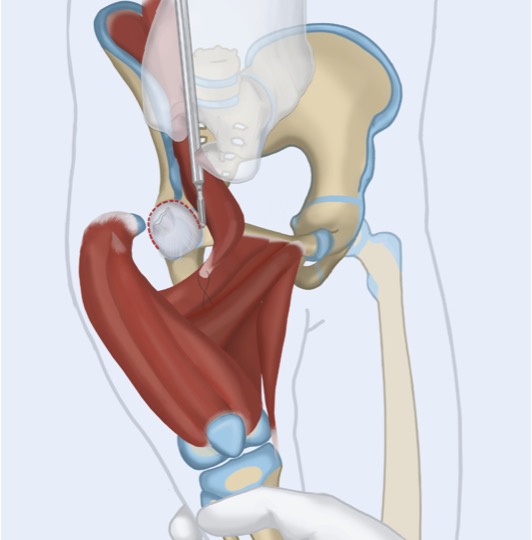
If the femoral head is present, it is completely removed.
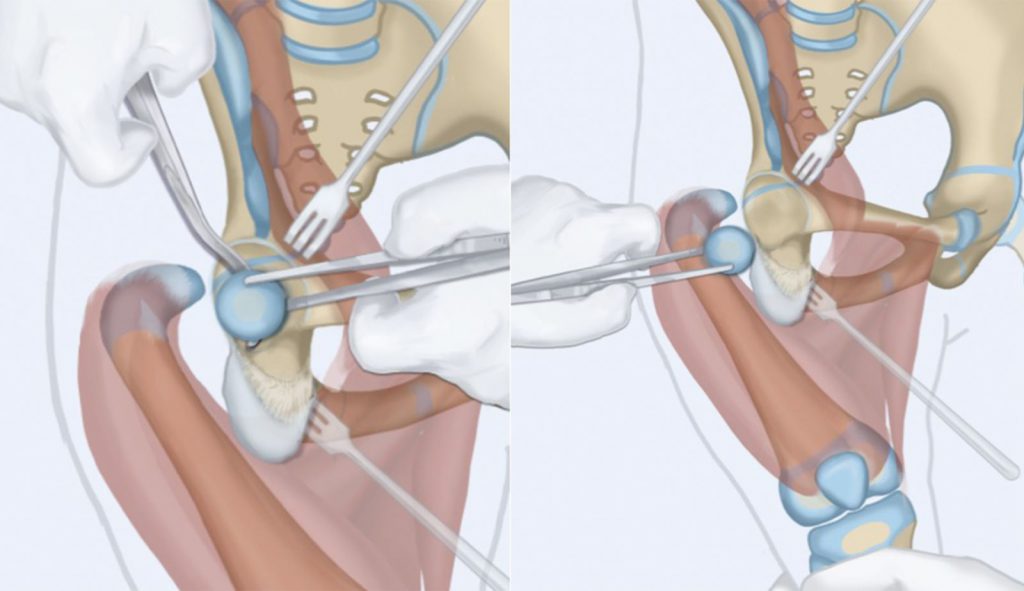
Femoral Osteotomy
Next, Dr. Paley will perform the femoral osteotomy. The nature of the procedure will differ depending on the size of the upper femoral head. Version A is performed when the femoral head has sufficient hook and length to fit a blade plate. Version B is performed when there is insufficient hook of the upper femur and a blade plate will not fit.
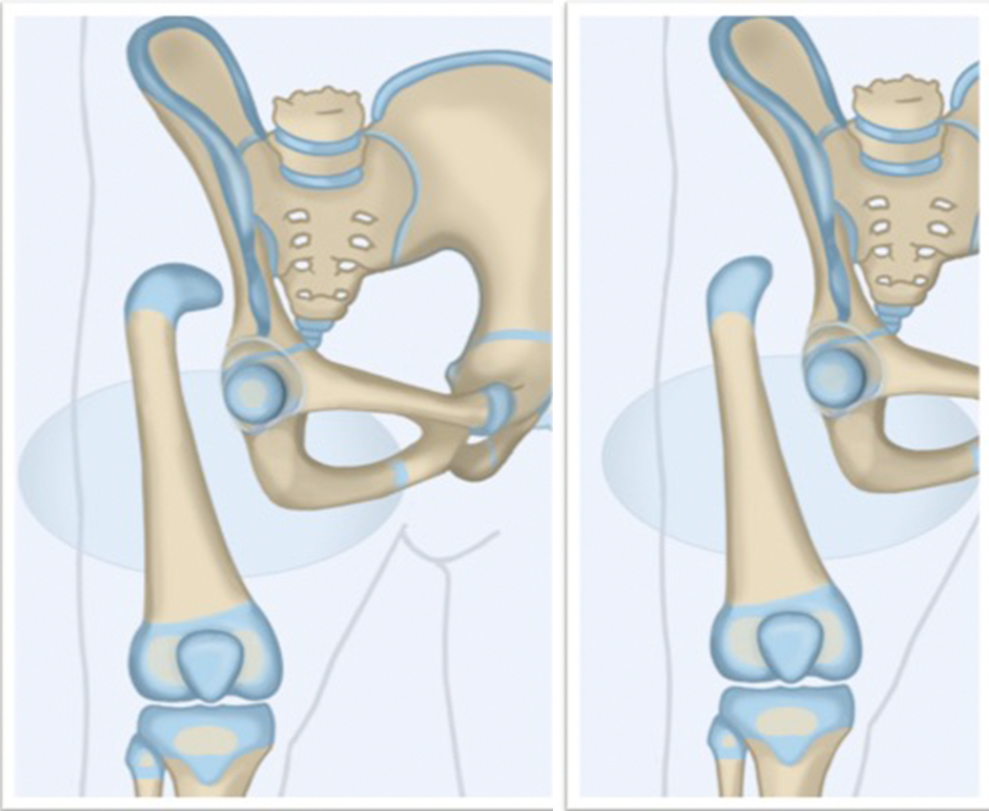
Version A
In Version A the femoral osteotomy is performed perpendicular to the length of the femur.

Next, Dr. Paley will drill a hole through the upper femur and the hip joint. The cartilage of the greater trochanter is attached to the hip joint and then connected to the upper portion of the femur.
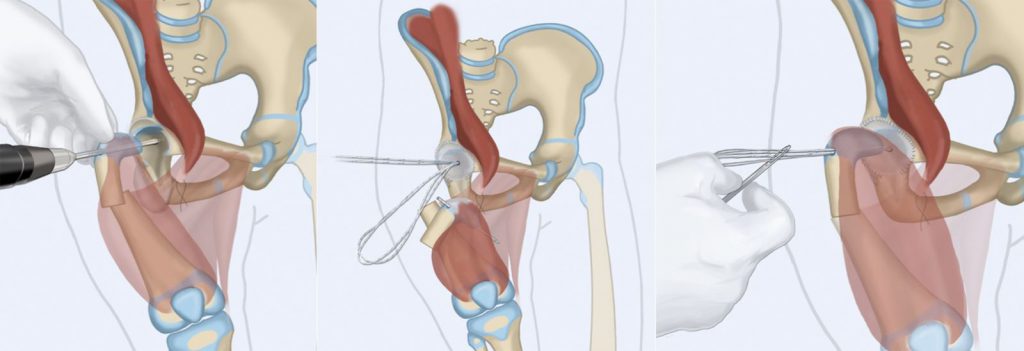
The femur is cut a second time and it is then slotted into place.
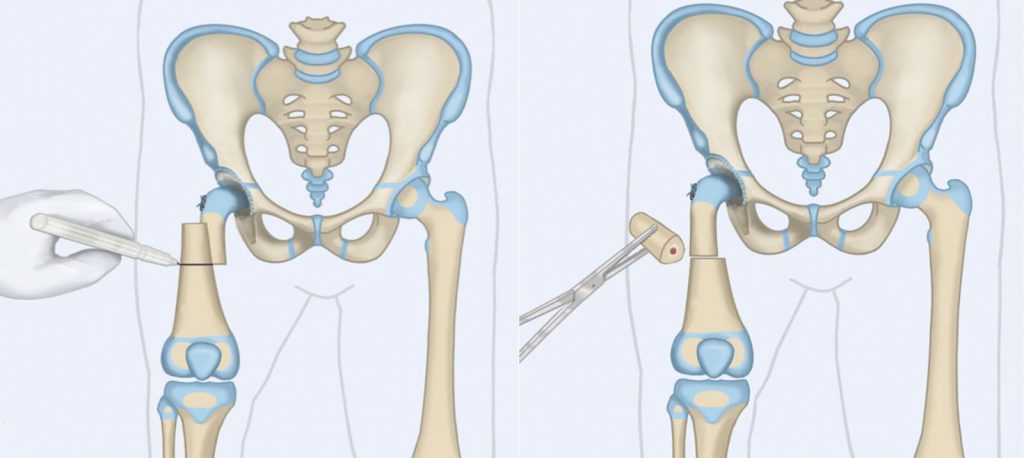
A blade plate is then aligned along the edge of the femur and secured with screws.
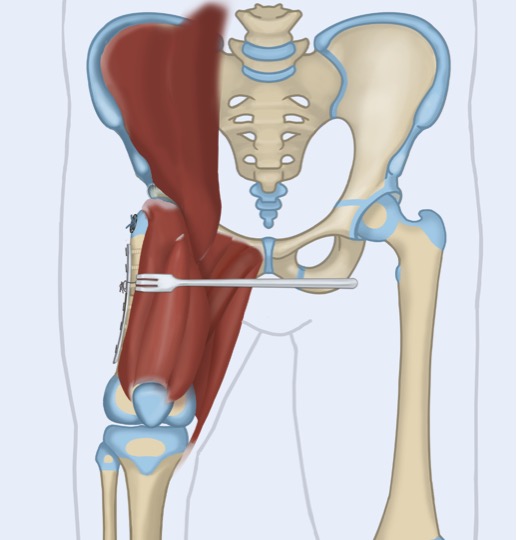
The final steps are to repair and reattach the muscles and apply the external fixator. In Version A the gluteus muscles are able to reach the femur and thus no abduction slide is necessary.

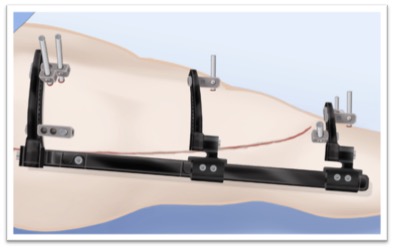
Version B
In Version B, the femoral osteotomy is performed at a forty-five degree angle.
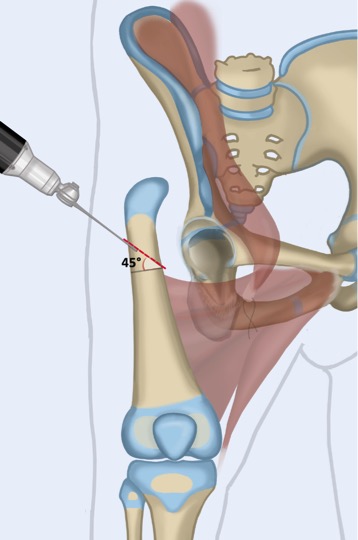
The cartilage of the greater trochanter is used to reconstruct the femoral head and connect the upper femur to the hip joint as in Version A. Before the femur can be reconnected to the upper femur, it must be externally rotated.
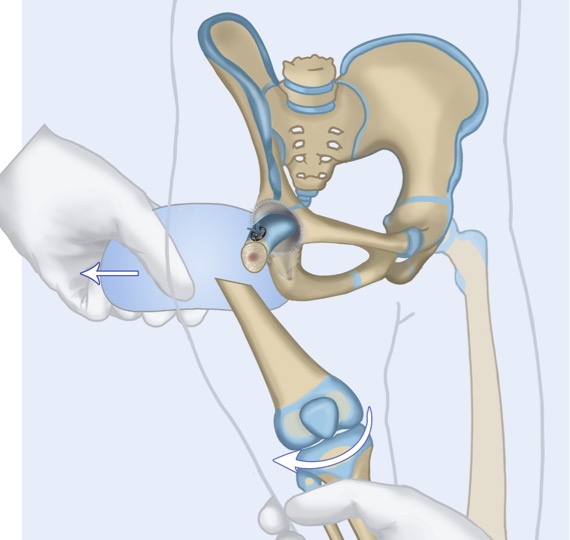
The upper femur and hip joint is then connected to the side of the shaft of the femur. This results in a ninety degree orientation between the shaft of the femur and the pelvis.
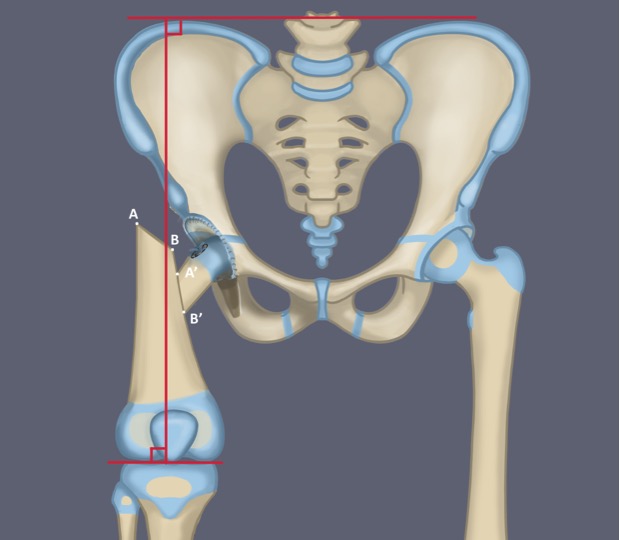
Two screws are then inserted to hold this alignment in place.
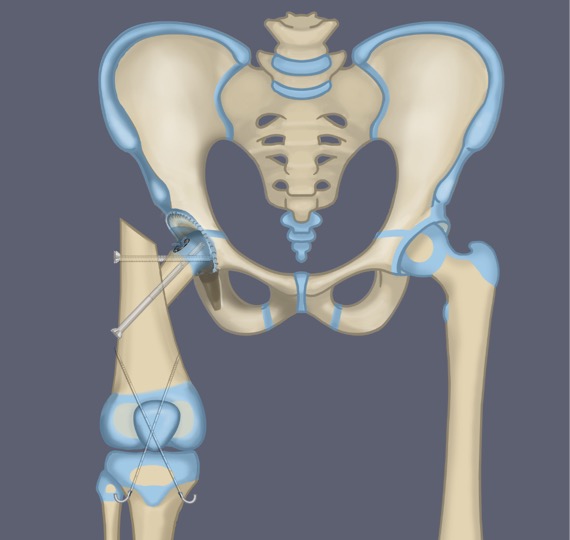
The final step is to reattach the muscles. In Version B the gluteus muscles do not have sufficient length to reach the femur. Dr. Paley will therefore perform an abductor slide.
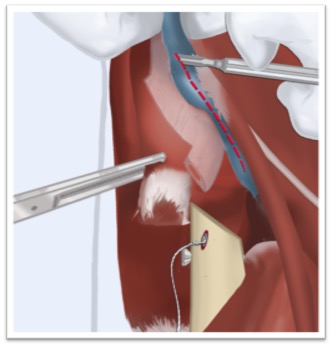
The final step is to apply the external fixator, as in Version A.
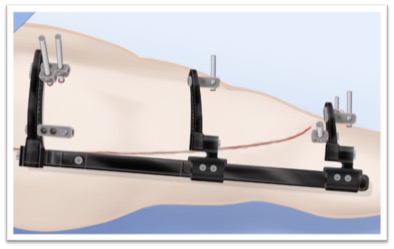
This completes the SUPERhip 3 procedure.